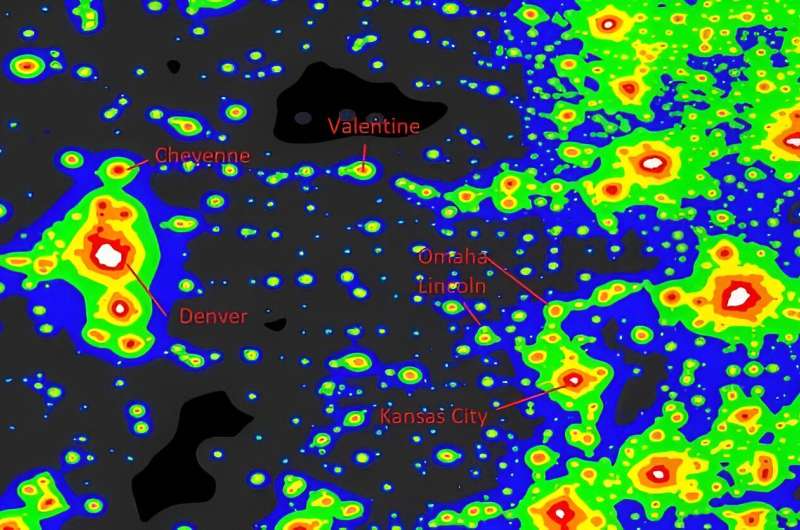
September 20, 2024 by Mark Thompson, Universe Today
Collected at: https://techxplore.com/news/2024-09-worldwide-pollution-inexpensive-sensors.html
As someone that has always lived in the UK countryside, I am no stranger to the glory of a dark star-filled sky. Sadly, 60% of the world’s population has already lost access to the night sky thanks to light pollution. Across Europe and the U.S., that number climbs to nearer 80%.
A team of researchers wants to try and track the growth of light pollution, and to that end, have developed an inexpensive sensor made from off-the-shelf parts. Their hope is that people around the world will build and install these sensors to share their data, enabling them to track the spread of light pollution. If you’ve got technical skills, this could be a fun project.
Astronomers the world over are all too familiar with the scourge of light pollution. It’s one of the main reasons observatories tend to be located in the middle of nowhere. Of course, the night sky is illuminated by natural light from the stars and moon, but also zodiacal light and aurorae can shed their own mystical light on our sky. Light pollution doesn’t refer to these natural wonders; instead, it refers to the excessive or misdirected artificial light from human activity.
Light pollution not only affects astronomers, it disrupts ecosystems, wildlife and even human health. It typically comes from streetlights, building lighting, advertising and even car headlights. It generally creates a nasty orange or white glow that hangs over towns and cities, obscuring the beauty of the universe.
It also interferes with the behavior of nocturnal animals, has a negative impact on human sleep cycles and can lead to health issues like insomnia or stress. There are suitable ways external lighting can be controlled and its impact minimized, but we need to get people to actually want to make that change.
That’s the dream of the team behind the FreeDSM device and the Gaia4Sustaniability project. Their aim is to provide an easy-to-use piece of hardware and software which is reliable and will be able to measure night sky brightness caused by light pollution.
The framework will be able to calculate the excess light pollution which is in excess of natural sky brightness to inform public, nonscientific stakeholders and the science community about the spread of light pollution.
The findings are published on the arXiv preprint server.
Using hardware that is readily available, the device is relatively cheap to build, coming in at less than $65 USD (around £50 GBP.) It is based around the Osram TSL2591 sensor with two diodes. One of them takes sky brightness measurements in the infrared and the other in the full visible spectrum. It then samples the brightness every minute while it also captures humidity and temperature. Looking at the relatively comprehensive instructions, it looks like anyone with modest DIY skills will be able to build this.
The device is an excellent step forward toward analyzing the state of light pollution across the planet. It uses data from the Gaia satellite to greatly enhance the accuracy of the light pollution measurements. It does require legions of groups or individuals to build and install a device, however.
Hopefully, it will appeal to the several thousands of fellow geeks out there to pick up their screwdriver and soldering iron to make the dream of turning the tide on light pollution a reality.
More information: Mario Casado Diez, FreeDSM and the Gaia4Sustaniability project: a light pollution meter based on IoT technologies, arXiv (2024). DOI: 10.48550/arxiv.2409.10298
If you want to have a go for yourself, you can learn more about the project here and find the instructions to build your own sensor here
Journal information: arXiv

Leave a Reply